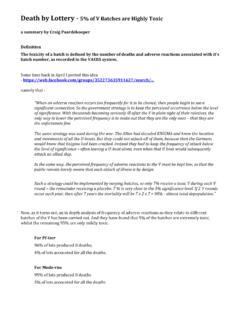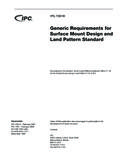Transcription of IGCSE GEO CASE STUDIES - uploads-ssl.webflow.com
1 IGCSE Geography Case STUDIES Theme 1- Population country which is over-populated : Bangladesh country which is under-populated : Australia country with a high rate of natural population growth : Bangladesh country with a low rate of population growth (or population decline) : Russia International migration : From Mexico to USA country with a high dependent population : Japan densely populated country or area : Bangladesh sparsely populated country or area : The Canadian northlands policy : China s one child policy policy : France Theme 2- The natural environment earthquake : Christchurch 2010-12 volcano : Soufriere hills, Montserrat opportunities presented by a river or rivers, the associated hazards and their management: River Ganga opportunities presented by an area or areas of coastline, the associated hazards and their management : Holderness Coast , Uk area of tropical rainforest : Amazon Rainforest area of hot desert : Sonoran Desert Theme 3 - Economic development transnational corporation and its global links : Walmart farm or agricultural system : Intensive rice production in the Lower Ganges Valley country or region suffering from food shortages : Sudan industrial zone or factory : Toyota , Burnaston Manufacturing Plant area where tourism is important : Goa supply in a country or area : Iceland supply in a country or area : Colorado river of USA area where economic development is taking place and causing the environment to be at risk : Impact of Hoover dam on river Colorado, USA 1A country which is over-populated.
2 Bangladesh Population - 153 million Population density- 1062/km Land area - 147,000 km Natural increase- Resource poor country Lack of natural resources In 1971, the population was 75 million, Now, it is more than the double of it : showing an increasing population growth rate. High poverty leads to a lower standard of living , increasing the need of children to earn to improve the economy. 4/5th of the population live in rural areas 40% of the population is under-employed Cyclones and flooding makes the situation worse, because 80% are situated on the floodplains of Ganges, Brahamaputra and Meghna. People living there reach the higher grounds, increasing the crowd of the already crowded area. This increase rural-to-urban migration ( one of the problems faced by Bangladesh due to overpopulation ) The capital city Dhaka faces increased population as people move to Dhaka to fulfil their basic needs.
3 As the population increases, Dhaka also faces pressure of housing, healthcare, water and sanitation. The population density of Dhaka - 43000/km ; one of the largest population densities in the world. Only 1 qualified doctor for 25,000 village people ! Due to the increased population, problems faced by Dhaka include more traffic and congestion , and increasing unemployment. Moreover, getting admission became extremely difficult - 20 seats for 20,000 people. Bangladesh s land area is relatively less than its population , making it a densely populated country. The population density is 20 times the global average ! A few more causes include fertile land for agriculture , a high illiteracy rate and no or little awareness of cons of a larger population. Causes for a high growth rate- High birth rates High infant mortality rates- 43/1000 ( IMR- Infant mortality is the death of young children under the age of 1.)
4 This death toll is measured by the infant mortality rate, which is the number of deaths of children under one year of age per 1000 live births.) Increased poverty so increase need of children for the development of the economy. High illiteracy rate - No awareness of contraception No emancipation of women Increased subsistence farming as 4/5th live in rural areas. Causes for high density- Land area is relatively less than the population A very fertile region - attracting farmers and others to live there Rural to urban migration in Dhaka Rice production. ( you can include other causes too - mentioned above ) 2A country which is under-populated : Australia Population - 22 million Population density- 3/km Rate of natural change - Infant mortality rate - 4/1000 Land area- million km ( 6th largest in the world) Fertility rate- Resource rich country Exports raw materials like coal, iron ore, gold ,etc.
5 Land area us huge, therefore, population density is quite less. There is an uneven population distribution - Maximum people live on the fertile coastlines Some parts of australis have 0 population There is a positive net migration, leading to a good quality life. Causes of underpopulation There is developed infrastructure and improved health and education. Improved levels of healthcare Availability and affordability of contraception Low fertility rates Highly skilled workers are paid high wages , therefore , less need of children Emancipation of women Problems - Shortage of workers Not possible to exploit all resources Less tax payers , therefore , the government receives less money Schools and hospitals may close Less brain power in the future Less innovation Less development of the economy Public transport links may close Dependancy ratio may increase 3A country with a low rate of population growth (or population decline) Russia In 2012, Russia s birth rate was 13/1000 while the country s death rate was 14/1000, giving a rate of natural change of per cent.
6 In 2017, Russia s birth rate was 11/1000 while the country s death rate was , giving a rate of natural change of per cent. Even as of now, in 2018, the growth rate is Such natural decrease is common in eastern Europe. Russia s population reached its highest level of almost million in 1991 (Figure 20 and Table 6), just before the break-up of the Soviet Union. Since then it has been mainly in decline, although very slight increases have been registered in some recent years. In 2012 the Russian population stood at 143 million. With a population density of about km2 according to the 2010 Russian Census, this is one of the most sparsely populated countries in the world. Table 6 : Russia s population, 1991-2050 The decline in Russia s population has been due to a combination of economic and social factors. Population decline or very slow growth has been due to: Low birth rates High death rates, particular among men Emigration The change in recent decades from a communist centrally planned economy to a market economy has resulted in some people being much better off, while many other people struggle to make aw reasonable living.
7 Inequality has increased considerably in Russia, with unemployment and poverty being major concerns for many people. The cost of raising children is perceived to be high when both parents need to work to make ends meet. These circumstances have had a big impact on decisions to start a family on decisions to extend a family. Ye a rPopulation (millions) (estimate) (estimate) 4 Education standards for women in Russia are high and thus women in general have the decisive say in decisions about family size. The use of contraception is high with 80 per cent of married women aged 15-49 using various methods of contraception. In 2015, adult literacy rate for Russian Federation was %. Adult literacy rate of Russian Federation increased from 98 % in 1989 to % in 2015 growing at an average annual rate of %. This clearly suggests high female literacy also.
8 The difference in life expectancy between men and women in Russia is considerable. In 2012 life expectancy for women was 75 years, but only 63 for men. Even as per 2017, life expectancy for women was years, but only for men This extremely low rate for men in a European country has been attributed to very high intakes of alcohol, the high incidence of smoking, pollution, poverty and the ravages of HIV/AIDS and other diseases. The high male death rate has resulted in there being million more women than men in Russia. Population decline has had its greatest impact in rural areas with 8500 villages said to have been abandoned since 2002. The cold northern regions of Russia have experienced the highest levels of depopulation . Such are the concerns of many Russians about the future that a sociological survey in June 2011 found that one-fifth of the Russian population are potential emigrants!
9 In 2017, the net migration rate was migrant(s)/1,000 population. In 2008 Russia began honoring families with four or more children with a Parental Glory medal. The Government has urged Russians to have more children, sometimes suggestion that it is a matter of public duty. President Vladimir Putin on Tuesday announced a string of reforms aimed at boosting birth rates in Russia as the population continues its long-term decline following a period of improvement. The Russian leader said his government would allocate $ to the scheme, which would give Russian women an allowance of $180 for 18 months after the birth of their first child. According to the Russian statistics agency, the country lost 106,200 people between January and October 2017. During the same period in 2016, Russia gained 18 200 people. Vladimir Putin also called for extending an existing financial support program for families with a second child or more to the end of 2021.
10 In its present form, the program is to expire in 2018. For more than a century, Russia has suffered periodic waves of mass emigration. Now it could face yet another one, perhaps leading to the largest brain drain the country has experienced in 20 years. According to Russia's state statistical agency, 350,000 people emigrated from Russia in 2015 10 times more than five years ago. The outflow began in earnest in 2012, driven mostly by political friction in the country, but Russia's current economic crisis has accelerated the pace. As highly skilled Russians emigrate, the future of innovation and private business in the country has been called into question. Since 2012, the number of Russians leaving the country has steadily climbed, from 36,774 in 2011 to some 350,000 in 2015. 5An International migration : From Mexico to USA Since 1965 more than 16 millions Mexicans have migrated to USA.
















